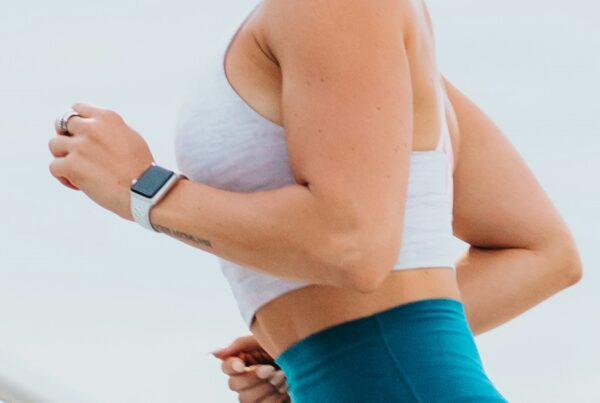Walking has always been a popular go-to exercise, no matter whether you’re a devoted athlete or a part-time couch potato. It’s joint-friendly, easy to stick with, and does not require much skill. While your heart health will rejoice at a 30-minute bodyweight stroll, there is actually room for opportunity to maximize this time and easily boost your fitness. Elevate your walking game to burning three times more calories and building full-body muscle through rucking.
Rucking is walking with weight on your back
Rucking refers to the action of walking with a weighted backpack fitted to you. It has military origins where training is centered around marching across a certain distance while carrying a load of equipment. It may sound possibly daunting to some. However, it is not a novel fitness activity that mainstream culture recently started entertaining.
School implicitly promotes rucking where you have to carry your books around on your back. In fact, transitioning from one classroom to the next was not merely a time for conversing with your peers, but also for building your back and shoulder muscles.
Seasoned and amateur hikers become emergency kit mules as they transport an assortment of essential items in their rucksacks when roaming along a trail. A commute to work may require you to bear the load of important paperwork and your laptop. The point is, we are no strangers to the action of rucking and we tend to do it with ease.
The benefits of strength training and cardio combined
Optimizing strength training in the gym typically requires a controlled environment and specific concentration. Conversely, rucking naturally prompts your body to make the necessary adjustments to compensate for the added weight. Research has shown that rucking improves muscle power in both men and women. In addition, it lowers rates of perceived exertion because your body adapts accordingly without conscious input. Your body engages and stabilizes its shoulder, back, core, and leg muscles to keep itself upright and able to move the weight when walking.
Walking with extra weight on your back means burning more calories because your body has to transport a mass in addition to its own weight. In response, more energy is expended to accomplish this. Ultimately, rucking is resistance training combined with the cardio of a hike, and it’s an excellent gateway into fitness. The prerequisites to participate in it are a backpack with things in it, a pace that suits you, and a desire to move your body.
Other reasons why you need to start rucking
A whole host of benefits come with marching around with a rucksack on your back. Incorporate this efficient muscle-toning and low-impact cardio session into your workout regimen for the reasons listed below.
Improve your posture
The demands of a desk job can sometimes come at the expense of a painless back and good posture. Rucking is an excellent remedy to counter a crouched back at the end of a working day. This is because it ensures proper back and shoulder alignment to keep the added weight in place; hunching forward will make this task uncomfortable. Frequent rucking actually trains your upper body to sustain this optimal positioning and remain pain-free.
Get outdoors more
According to a report by the Centers for Disease Control and Prevention (CDC), 25% of U.S. adults lead sedentary lifestyles, with physical inactivity rates varying among different races/ethnicities and locations. It is clear that people are not moving their bodies enough nor do they invest in time spent outside. Thankfully, rucking supports the satisfaction of both these vital human needs. Why not enjoy watching the sunset as you move yourself and your muscle-engaging cargo from point A to point B? Or perhaps you can relish in the contents of a picnic basket after forging along with the weight of it during a scenic hike?
The difficulty level is scalable
Rucking caters to everybody’s different degrees of fitness. Regular gym-goers may have familiarized their bodies with weight training, therefore a heavier load will offer the right amount of challenge. Absolute beginners can opt to carry a smaller load and gradually increase it as they condition their bodies to the activity. In terms of pace, you can ruck as fast or as slow as needed. However, a good point of reference when entering the world of rucking is to aim for anywhere between 17-20 minutes per mile to make it worthwhile.
Getting started
Depending on your exercise history, ruck anywhere between 15-30 minutes and work your way up.
Adjust the timing depending on your level of endurance and the load you are carrying. Typically, any rucksack ought to do the job as you begin your rucking journey.
Though, to really reap the benefits, it may be a good idea to purchase an appropriate backpack. The criteria for a suitable backpack involves one that is ergonomic and evenly distributes weight for proper muscle engagement.
In conclusion
Rucking can turn up the notch of ordinary walking where you can savour the rewards of both cardio and strength training. Therefore, you can experience a calorie burn without having to take up running or compromise your joint health. So, if you are feeling unsatisfied with your current movement routine or feel the urge to switch to more of a low-impact challenge, then rucking may have your name written on it.





![women [longevity live]](https://longevitylive.com/wp-content/uploads/2020/01/photo-of-women-walking-down-the-street-1116984-100x100.jpg)









